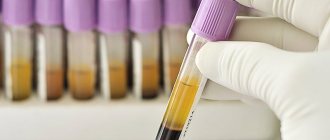How to correctly evaluate the results obtained?
When using a mechanical peak flow meter, the maximum speed should be noted in the asthma diary.
If the patient uses the electronic option, the data is displayed automatically on a smartphone or tablet. This saves time. There are several signal zones to assess the dynamics of diagnostic indicators. They vary depending on the severity of bronchial obstruction. Signal zones:
Green Zone. It is characteristic of the remission stage. PEF = 80 - 100% of normal. Indicators range from 320 to 400 l/min. The patient feels well, there is no symptomatic obstruction or it manifests itself only slightly. Measurement data fluctuates per day by no more than 20%. There is no need to adjust the treatment you receive.
Yellow zone. There may be an exacerbation of the disease: cough, shortness of breath is not expressed, weakness. PEFs range from 60 to 80% of normal. The treatment recommended by the doctor is effective. PEF indicators can fluctuate during the day from 20 to 30%.
Red zone. PEF is below 60% of normal. The spread of indicators during the day can be more than 30%. The patient has pronounced wheezing, shortness of breath, coughing fits, and bronchial obstruction. Emergency assistance and treatment adjustment are required.
The doctor takes into account the likelihood of entering the red zone and must discuss with the patient a plan for providing primary care when entering the red zone. The first thing to do is take a bronchodilator.
Topic No. 2 Peak flowmetry. Peak flow diary. Self-control training Every patient suffering from bronchial asthma should have a peak flow meter, just as every hypertensive patient should have a device for measuring blood pressure.
What is a peak flow meter?
This is a portable device that is used to determine one but important parameter that determines the function of external respiration - the peak, or maximum expiratory speed with which the patient can exhale air from the lungs. This indicator in English is called peak flow, that is, “maximum flow,” hence the name of the device. The maximum expiratory flow depends on many things, but most importantly, it shows how narrowed the bronchi are. Often the patient does not yet feel a deterioration in his condition, and reducing the speed during peak flowmetry will allow the patient to take certain actions even before his well-being changes significantly.
Why is peak flowmetry necessary?
1. To objectively assess the effectiveness of the treatment. If, as a result of regular measurement of peak expiratory flow, the patient sees that it is increasing, this means that the prescribed treatment is effective, even if he does not yet notice it too much. If the indicator remains unchanged, it means that the prescribed therapy does not bring the desired effect, and it is necessary to change or intensify the treatment. These decisions must ultimately be made by the doctor, but the patient must also be aware of changes in these indicators. 2. To monitor the condition of the bronchi. Peak flowmetry will help to notice their progressive narrowing in time (that is, the onset of an exacerbation of the disease). Analysis of peak flowmetry will help the patient and his doctor determine what indicator will become normal for the patient, at what values it is necessary to change treatment, and when it is necessary to urgently seek medical help. 3. In order to identify the patterns of your illness. Many asthma patients know that even when they feel well, there are changes in breathing, the patterns of which are sometimes difficult to identify. In addition, some patients cannot answer the question of why their asthma attacks occur. Even doctors in some cases do not know the answer. By conducting hourly or daily monitoring of your bronchi using a peak flow meter, while noting what conditions you are in, what medications you take, what food you eat, the patient can identify patterns that he did not even suspect. Suppose you go to work, your peak expiratory flow gradually increases during the working day. At home, you use a peak flow meter to note that this indicator is decreasing. Talk to your doctor about any allergens in your home that you are sensitive to, such as house dust, cat dander, or aquarium fish food. The situation may be different. For example, you leave for work, and the speed decreases from the moment you took your workplace. Perhaps, in this case, the unfavorable substance is at your work. Typically, peak flow meters come with diaries - daily and weekly. The daily diary is filled out every two hours, the weekly diary is filled out every day for a week, two or three times a day. At the beginning of using a peak flow meter, they constantly determine their indicator over a certain period of time, identifying patterns, and then the peak flow meter is used much less frequently, to periodically check the condition of their bronchi, as well as in all cases of feeling worsening breathing. Typically, each device comes with detailed instructions, but we will mention the general rules for using peak flow meters now. There are different types of peak flow meters, but they all use the same way, exhaling sharply into the device. The arrow, deviating, will indicate the value of the peak expiratory flow. Exhalation is done while standing or (which is somewhat worse) while sitting. You need to make three tests in a row, choosing the best value from them. This value is recorded in the diary. The devices are very small and light, so they are easy to take with you to work or out of town. It is very important to assess the normal value of peak expiratory flow for a given patient. There are 2 points of view on determining the norm: 1. Many manuals recommend taking the proper value of peak expiratory flow, which is determined by height, age and gender. 2. As a normal value, take the average best value of peak expiratory flow, which is measured during the period of remission of the disease.
The best peak expiratory flow rate for a given patient can be assessed over a 2- to 3-week period during which the patient records peak flow readings at least once daily immediately after noon. After each use of an inhaled beta-agonist, an additional measurement should be taken to relieve symptoms. The best personal results are usually achieved when measured immediately after noon after the maximum volume of therapy has stabilized the patient's condition. Sometimes a course of oral corticosteroids may be required to determine the best peak expiratory flow rate. Personal best value should be re-evaluated periodically based on disease progression.
Definition of peak flowmetry.
Peak flowmetry is the maximum volume of air exhaled during forced exhalation. It is measured in liters per minute of time. The flow rate of exhaled air depends on the magnitude of obstruction of the medium and large bronchi. Since in asthmatic diseases obstructive processes extend to large and medium bronchi, the use of peak flowmetry facilitates the diagnosis and monitoring of bronchial asthma. In chronic nonspecific lung diseases, obstruction occurs in smaller bronchi, so peak flowmetry in COPD is not a reliable method for diagnosing and monitoring the disease.
Interpretation of peak flow readings.
Even within the same person there can be significant differences in peak flow readings. Each person has his own day and night patterns. To determine the difference between day and night indicators, a variation test is used. In addition to normal peak flow measurements, there are situations that are associated with the development of a particular disease. From a practical point of view, it is necessary to determine for each patient his own norm. This can be done using the patient's so-called best personal indicators.
Performing Peak Flowmetry
- explain the principle well and, if necessary, show the correct use of the peak flow meter
- For each measurement, the patient must take the same position (sitting or standing)
- set the arrow to zero
- The peak flow meter is held horizontally using two hands, while avoiding blocking the outgoing air from the peak flow meter
- neutral neck position (neck not bent)
- instruct the patient to take as deep a breath as possible
- The mouthpiece of the peak flow meter is wrapped around the lips and teeth, avoid covering the opening of the mouthpiece with the tongue
- now you need to exhale the air with maximum force, and the force of exhalation is important, not the amount of air exhaled
- readings are taken into account only in the first second
- repeat this procedure twice and select the maximum value
Protocol for performing a peak flow test for bronchial asthma.
Conditions.
- Age over 12 years.
- Peak flowmetry for the diagnosis and monitoring of bronchial asthma can be used from the age of 6 years. To use peak flowmetry in children under this age, peak flow diary indicators are assessed.
- If possible, do not take bronchodilators 8 hours before the test.
Performing a reversibility test.
- take a peak flow measurement
- add a bronchodilator using the expansion chamber
– patient under 60 years of age: 400 mg salbutamol or 500 mg terbutaline or 400 mg fenoterol
- patient over 60 years of age: 80 mg ipratropium bromide
- wait 10 minutes for inhalation with salbutamol, terbutalline or fenoterol and 45 minutes for inhalation with ipratropium bromide
- repeat peak flow measurement
- Calculate a test for reversibility based on the following formula - peak flow after bronchodilator therapy minus peak flow before bronchodilator therapy divided by peak flow before bronchodilator therapy (as a percentage).
Test result.
- an increase of more than 15 percent – the test is positive
- an increase of less than 15 percent – the test is negative
Performing a variability test.
Provide the following instructions to the patient
- carry out peak flow measurements at the same time, immediately after getting up in the morning and before going to bed
- the use of bronchodilators is possible only after peak flowmetry
- For adults, measuring within the next 7 days is sufficient; for children over 12 years of age, measuring must be carried out within 14 days.
- For all measurements, record the date, time interval, peak flow measurement result
- if necessary, you can use a chart
Calculate test variability based on formula
- peak flowmetry evening minus peak flowmetry morning, divided by peak flowmetry evening plus peak flowmetry morning, multiplied by 100 percent
Test result.
Adults.
- when measured over the next 7 days, more than 2 days of more than 15 percent of the difference - the test is positive
- when measuring the next 7 days, less than 2 days more than 15 percent - the test is negative
Children under 14 years old.
- within a period of 14 days – more than 2 days more than 30 percent difference – test positive
- within a period of 14 days, less than 2 consecutive days more than 30 percent – the test is negative
How to keep a self-control diary?
Start by printing a copy of your asthma action plan. So, the diary should record daily:
- The number and nature of daytime manifestations of the disease (attacks of suffocation, episodes of wheezing or audible wheezing, shortness of breath, a feeling of tightness in the chest or paroxysmal cough). If the cause (provoking factor) of such violations is obvious, then it must also be indicated.
- Number and nature of night symptoms . Moreover, if these symptoms caused interruption of sleep and required any measures (sit up in bed, get up, walk around, open the window, drink hot tea, inhale medicine from an inhaler, etc.), then this should also be noted in the diary, along with an indication of a more or less exact time when a particular problem occurred.
- The daily need for additional (i.e., in addition to routine treatment prescribed by a doctor) inhalations of bronchodilators.
- Peak flowmetry readings “Adverse effects from treatment (if any), that is, side effects of drugs.
Next, determine and record your zones (this means the indicator during an attack, the best indicator before taking the drug, after taking it) according to the readings of the peak flow meter. Record this information in a journal so that it is always at hand.
Every day:
- First, enter the date.
- Measure PEF using a peak flow meter and record the reading in a diary. Remember: you need to measure PEF before taking medications.
- Compare the PSV readings with the readings typical for the zones.
- If your highest peak flow meter reading is less than 80% of your record reading, follow your doctor's action plan. Do not forget that on this day you need to check the PEF more often than usual, including the evening PEF.
- Record in your diary the total number of inhalations of a short-acting beta 2 agent (rescue or immediate-release inhaled drug) over the past 24 hours.
- Write down any asthma symptoms you have during the day.
Remember to bring your self-monitoring diary with you to each consultation with your doctor. This way he can evaluate how well the treatment regimen is working.
Action plan for bronchial asthma
Attention! An action plan for bronchial asthma is developed together with the attending physician and filled out under his supervision. Do not self-medicate; For any questions regarding treatment options, please consult your doctor.
Your regular therapy:
- Take ________________________________________________ every day
- Before physical activity, take ________________________________________________________________
WHEN TO INCREASE THE VOLUME OF THERAPY
Rate your level of asthma control
Over the past week you noted:
daytime asthma symptoms more than 2 times? No Yes
restrictions on activity or exercise due to asthma? No Yes
waking up at night due to asthma? No Yes
need your [rescue drug] more than 2 times?_ No Yes
Peak flow readings (if you monitor them) are less than _____________? No Yes
If you answered YES to three or more questions, your asthma is not under control and your therapy may need to be increased.
HOW TO INCREASE THE VOLUME OF THERAPY
INCREASE therapy as recommended and assess daily for improvement:
____________________________ [enter medications and doses to increase the volume of therapy]
Continue this treatment for _________________ days [insert number of days]
WHEN SHOULD YOU CALL THE DOCTOR/CLINIC
Call your doctor/clinic______________________ [enter phone numbers]
If your condition does not improve after _____________ days [insert number of days]
_____________________________________________________[lines for additional instructions, optionally filled in]
SUDDEN/SEVERE LOSS OF CONTROL
If:
you notice severe shortness of breath, so you can only speak in short sentences;
you have a severe asthma attack and feel afraid;
you need your rescue medication more than every 4 hours and there is no improvement; That:
- take 2-4 inhalations of ________________________________________________[emergency drug];
- take_____ mg ___________________________________________________ [glucocorticosteroid tablets];
- seek medical help at ______________________________________________________________;
at __________________________________________; telephone: ______________________;
4) continue taking your _________________________ [rescue medication],
until you get medical help.
Doctor-therapist
Healthcare Institution “22nd City Clinic” V.N. Plotnikova
Diary and peak flow graph
The doctor issues a peak flow meter diary during the patient’s appointment, or a diary is included with the peak flow meter.
A diary is a notebook with lined lines. The columns contain days of the month and each day has two cells (morning, evening). On the side there is a graph of possible values of signal zones. When filling out the diary, the patient just needs to put dots in the required cell of the diary, the dots are then connected and a peak flow graph is obtained. The graph is necessary to determine fluctuations in the patient's condition. In the diary, the patient notes the use of medications.
The doctor analyzes the situation of control of bronchial asthma and bronchial obstruction using the patient’s diary. The more changes in the schedule, the more unstable the patient’s condition.
What is the device and types of peak flow meters?
Peak flow meter is a device used to assess the condition of bronchospasm. The device is a small tube into which the patient must exhale sharply. The device is additionally equipped with a special scale on which three zones are marked - green, yellow and red. Due to the convenient interface, the patient can easily navigate the state of his own respiratory system, which allows him to adequately respond to deterioration in health.
The operating mechanism of all peak flow meters is the same. The only difference is price, design and measurement accuracy.
The corresponding device was first created in 1958 by a doctor named V.M. Wright. However, the device has not found widespread use due to its large size and inconvenience to use. The inventor spent 18 years improving his device and in 1976, together with the company Clement Clarke Int. a modern version of the peak flow meter used today was created. The name of the corresponding model is mini-Wright.
Important! For maximum objectification of the data obtained, patients are recommended to carry out diagnostics with only one device, which the patient purchases for himself. Fluctuations in the final values for different peak flow meters can reach 15%, which significantly affects the overall picture.









